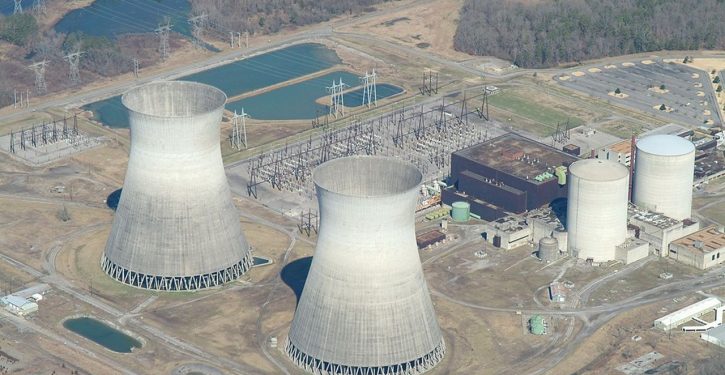
Nuclear power plants are becoming more efficient and reliable. So nuclear energy production peaked in 2018, even though some nuclear power plants have been shut down.
As the Energy Information Administration notes, “Although several nuclear power plants have closed since 2010,” remaining power plants have “added capacity.” “Nuclear power plants have also shortened the time they are out of operation for refueling or maintenance.” This has “allowed the remaining nuclear power plants to produce more electricity” annually. By 2025, however, so many nuclear plants are expected to shut down that nuclear power generation is expected to fall by 17%.
All remaining nuclear power plants would eventually be shut down under the proposed Green New Deal, a radical proposal backed by progressive politicians like Bernie Sanders, Elizabeth Warren, and Kamala Harris. An energy expert warned that the Green New Deal would “increase emissions” of greenhouse gases by shutting down nuclear plants, which emit no carbon dioxide or other greenhouse gases. The Green New Deal would close these plants even though they would be essential for the stability and reliability of any low-carbon power grid. That’s because nuclear plants produce a steady flow of electricity around the clock, unlike solar and wind power, which are affected by changes in the weather. Yet the Green New Deal blueprint says that its “plan is to transition off of nuclear” as “soon as possible.”
Will this presidential election be the most important in American history?
The Green New Deal could increase greenhouse gas emissions in other ways. It proposes “upgrading all existing buildings in the United States,” even very old buildings. In many cases, such upgrades would consume more energy than they would save. Thomas J. Pyle of the Institute for Energy Research said the Green New Deal’s construction projects would cause a lot of pollution: “How much steel is this going to involve? How much concrete? Think about the sheer amount of CO2 emitted into the atmosphere for retrofitting alone.”
Partly due to the vast number of government projects it would finance, the Green New Deal’s cost has been estimated by a think-tank as at least $50 trillion and potentially over $90 trillion (four times the size of the U.S. economy).
Meanwhile, the Green New Deal would shrink the economy by discouraging people from working, leaving the government with less money to finance clean energy. The original “Green New Deal” blueprint provided “economic security”—that is, welfare — for those who are “unwilling to work.” Rewarding unemployment leads to fewer people working and paying taxes. That means less tax revenue, more government welfare spending, higher budget deficits, and a larger national debt.




